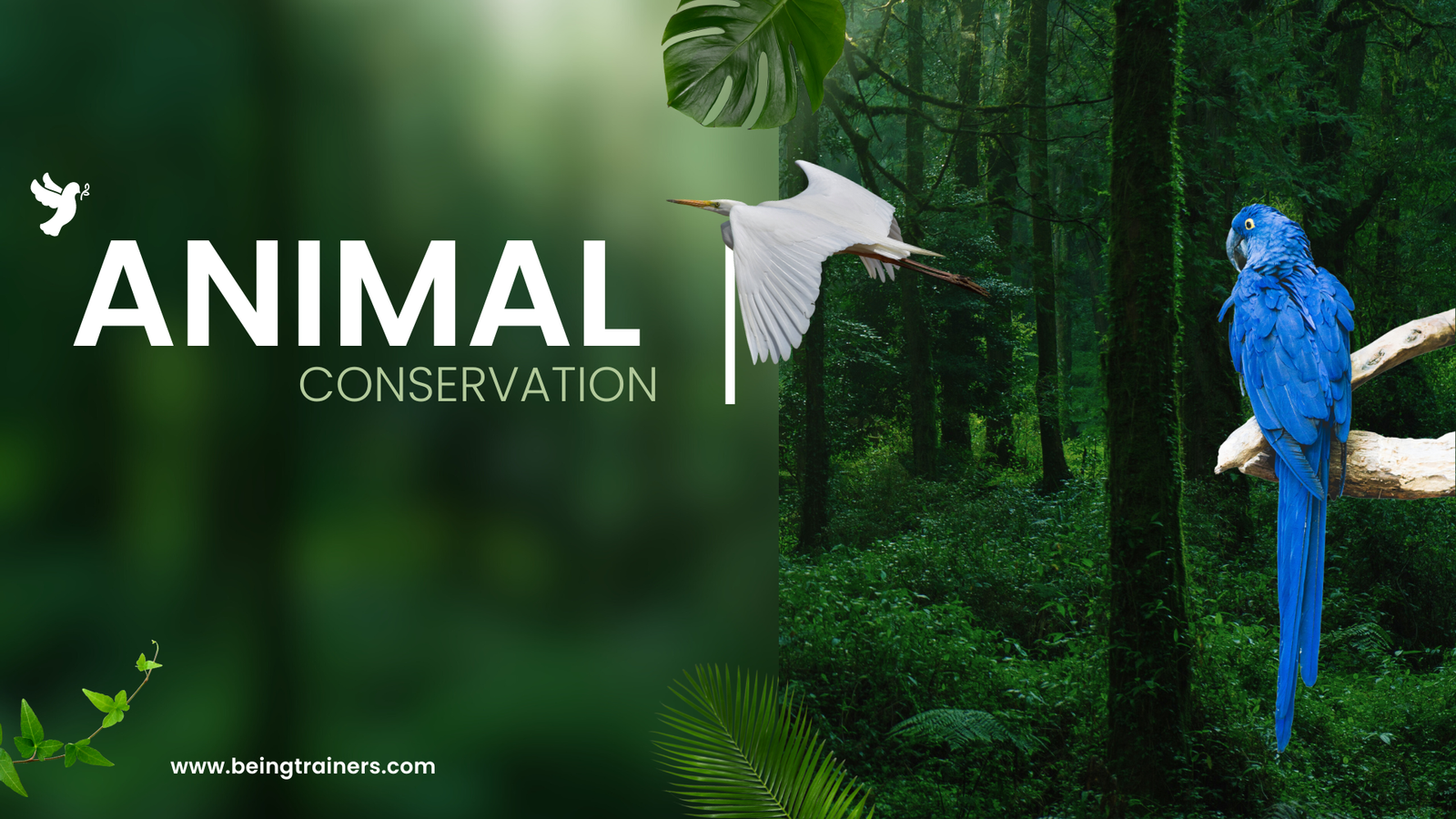Introduction:
What Is the Goal Of wildlife conservation? The primary focus of international efforts to protect Earth’s fragile ecosystems is wildlife conservation. Maintaining biodiversity is fundamental to wildlife conservation because it guarantees the survival of a wide range of species and protects the complex web of life on Earth. This essay examines the various facets of this goal, including the importance of biodiversity, the dangers it confronts, and the tactics used to protect it.
The Significance of Biodiversity:
Healthy ecosystems are built on biodiversity, sometimes known as the variety of species on Earth. It includes the genetic diversity of a wide range of taxa, including microbes, plants, and animals. Together, these elements support ecosystem production, resilience, and adaptability. In order to provide vital ecosystem services that are necessary for human well-being, such as pollination, water purification, and climate regulation, biodiversity is crucial.
The Endangering Biodiversity:
Biodiversity, although fundamentally important, faces numerous dangers, mostly from human activity. There is a serious risk associated with habitat damage brought on by industrialization and urbanization. These problems are made worse by climate change, which changes ecosystems and puts many species in jeopardy. Pollution exacerbates the problem, whether it comes from plastic waste or industrial emissions. Overuse of resources, such as illicit logging and overfishing, speeds up the extinction of species and upsets the delicate environmental balance.
Conservation tactics

To address the various challenges to biodiversity, wildlife conservation uses a wide range of tactics.
Preservation and Rehabilitation of Natural Environments:
The preservation and restoration of important habitats is a key component of conservation initiatives. The goal of initiatives is to protect and restore habitats so that wildlife can live in safe havens.
Management of Sustainable Resources:
It is vital to strike a balance between environmental preservation and human needs. Sustainable resource management ensures that human activities coexist peacefully with environment by encouraging ethical behavior in sectors including forestry, fishery, and agriculture.
Research and Population Monitoring:
It is essential to comprehend the dynamics of species populations. To collect information on distribution, behavior, and health so that decisions may be made with knowledge, conservationists monitor populations and carry out in-depth research.
Anti-Poaching Initiatives:
Illegal acts that seriously endanger several species include poaching and wildlife trafficking. The creation of anti-poaching squads and the imposition of strict regulations to combat wildlife crime are examples of conservation projects.
Education and Community Involvement:
It’s crucial to spread knowledge about the value of protecting wildlife. Individuals are encouraged to actively participate in conservation efforts through educational initiatives and community participation, which cultivate a sense of shared responsibility.
Mitigation and Adaptation to Climate Change:
With climate change becoming a significant hazard, conservation solutions involve both reducing contributing elements and making adjustments to the environment.
Connectivity & Corridor Creation:
In order to keep populations from becoming isolated, efforts are directed toward creating ecological corridors and preserving connectivity between fragmented habitats to aid in the movement and migration of wildlife.
Management of Invasive organisms:
Native ecosystems may be harmed by non-native organisms. To preserve the natural equilibrium of ecosystems, conservation measures involve the identification and management of invasive species.
Legislation and Policy Advocacy:
It is imperative to advocate for laws and policies that support wildlife. The goals of conservationists are to increase legal safeguards for endangered species, encourage environmental legislation, and have an impact on governmental decisions.
Global Cooperation:
International cooperation is crucial since biodiversity is an international phenomenon. International organizations, non-governmental organizations, and nations are collaborating to tackle cross-border problems and encourage collective accountability for the world’s biodiversity.
Success Stories in Conservation:
Showcasing effective conservation efforts inspires and teaches important lessons. Proactive actions resulting in the recovery of endangered species or the restoration of ecosystems illustrate the observable effects of conservation efforts.
Conclusion
In summary, the preservation of biodiversity, the survival of a wide range of species, and the equilibrium of Earth’s ecosystems are all directly related to the objective of wildlife conservation. Conservationists strive for a peaceful coexistence between human activity and the natural environment by tackling a wide range of issues, including habitat protection, sustainable resource management, population monitoring, anti-poaching initiatives, education, and international cooperation. The success stories in conservation give us hope because they show that we can ensure a future where biodiversity flourishes and benefits ecosystems, species, and people all at once with coordinated efforts.
FAQs
1. Why is wildlife conservation important?
Wildlife conservation is crucial for preserving Earth’s biodiversity, maintaining ecological balance, and ensuring the well-being of both animals and humans.
2. How can individuals contribute to wildlife conservation?
Individuals can contribute by supporting sustainable practices, reducing their environmental footprint, and raising awareness about the importance of conservation.
3. What are the main threats to wildlife?
Major threats include habitat destruction, climate change, pollution, overexploitation, invasive species, and diseases.
4. How does wildlife conservation benefit communities?
Conservation ensures the provision of essential ecosystem services, supports local economies through ecotourism, and fosters a healthier environment for human well-being.
5. What role does legislation play in wildlife conservation?
Legislation establishes legal frameworks to protect endangered species, regulate harmful activities, and promote responsible resource management.
6. How does global collaboration contribute to conservation efforts?
Global collaboration enables the sharing of knowledge, resources, and coordinated actions to address challenges that extend beyond national borders.
7. Are there success stories in wildlife conservation?
Yes, success stories include the recovery of endangered species and restoration projects that demonstrate the positive impact of conservation initiatives.
8. What is the connection between climate change and wildlife conservation?
Climate change poses challenges by altering habitats and migration patterns. Conservation efforts include strategies to mitigate these impacts and help species adapt to changing environments.

